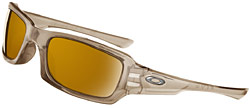Pinguecula / Pterygium
Pinguecula
A pinguecula (pin-GWEK-yoo-lah) is a yellowish, slightly raised thickening of the conjunctiva on the white part of the eye (sclera), close to the edge of the cornea. Pingueculae typically occur on the part of the sclera that is between your eyelids and therefore exposed to the sun.
While pingueculae are more common in middle-aged or older people who spend a lot of time in the sun, they can also be found in younger people and even children — especially those who are often outdoors without protection such as sunglasses or hats.
Pinguecula Signs and Symptoms
In most people, pingueculae cause few symptoms. But a pinguecula that is irritated might create a feeling that something is in the eye (called a "foreign body sensation").
In some cases, pingueculae become swollen and inflamed, a condition called pingueculitis. Irritation and eye redness from pingueculitis usually result from exposure to sun, wind, dust or extremely dry conditions.
Treatment of Pinguecula
Pinguecula treatment depends on how severe the symptoms are.Everyone with pingueculae can benefit from sun protection for their eyes from the sun's harmful ultraviolet radiation. Lubricating eye drops may be prescribed for mild pingueculitis, to relieve dry eye irritation and foreign body sensation. Steroid eye drops or nonsteroidal anti-inflammatory drugs (NSAIDs) may be needed to relieve significant inflammation and swelling.
Surgical removal of the pinguecula may be considered in severe cases when it interferes with vision, contact lens wear or blinking.
In a study published in July 2013 that compared removal of pingueculae with a laser vs. traditional surgical excision, researchers found that a higher percentage of eyes treated with argon laser photocoagulation (90.5 percent) demonstrated complete removal of pingueculae compared with traditional surgical excision (63.9 percent).
Also, subconjunctival hemorrhage and conjunctival scarring occurred less frequently among patients in the laser group compared with those in the excision group (0 percent vs. 34.8 percent for hemorrhages and 4.8 percent vs. 30.4 percent for scarring).
Frequently, pingueculae can lead to the formation of pterygia.

Wearing sunglasses and hats when outdoors can reduce your chances of developing pingueculae.
Pterygium (Surfer's Eye)
A pterygium (tuh-RIJ-ee-uhm) is an elevated, wedged-shaped growth of the scleral conjunctiva that invades the cornea. If you have more than one of these eye growths, the plural form of the word is pterygia (tuh-RIJ-ee-ah).
Pterygia are benign (non-cancerous) growths, but they contain blood vessels and can form scar tissue that can permanently disfigure the eye.
As with pingueculae, prolonged exposure to ultraviolet light from the sun may play a role in the formation of pterygia.
For this reason, and because pterygia frequently affect surfers and other people who spend a lot of time outdoors in the sun, another term used to describe the condition is "surfer's eye."
Pterygium Signs and Symptoms
Pterygia usually occur on the side of the eye closer to the nose, and they can affect one eye or both eyes.
Many people with mild surfer's eye do not experience symptoms or require treatment. Some pterygia may become red and swollen on occasion, and some may become large or thick. This may cause concern about appearance or create a gritty sensation or the feeling something is "in" the eye (called a foreign body sensation).
A large, advancing pterygium also can distort the shape of the front surface of the eye and cause astigmatism.
How a Pterygium Is Treated
Treatment of surfer's eye depends on the size of the pterygium, whether it is growing, and the symptoms it causes. If a pterygium is small but becomes inflamed, your eye doctor may prescribe lubricants or possibly a mild steroid eye drop to reduce swelling and redness. In some cases, surgical removal of the pterygium is necessary.
The pterygium may be removed in a procedure room at the doctor's office or in an operating room setting. A number of surgical techniques are currently used to remove pterygia, and it is up to your eye doctor to determine the best procedure for you.
For milder pterygia, a topical anesthetic can be used before surgery to deaden feeling in your eye's surface. Your eyelids will be kept open with an eyelid speculum while the pterygium is surgically removed. After the procedure, which usually lasts no longer than half an hour, you likely will need to wear an eye patch for protection for a day or two. You should be able to return to work or normal activities the next day.
Unfortunately, pterygia often return after surgical removal. In fact, some studies show recurrence rates up to 40 percent. Risk of recurrence also appears to vary among ethnic groups, with Hispanics having a greater risk of pterygium recurrence than whites.
To prevent regrowth after the pterygium is surgically removed, your eye surgeon may suture or glue a piece of surface eye tissue onto the affected area. This method, called autologous conjunctival autografting, has been shown to safely and effectively reduce the risk of pterygium recurrence.
A drug that slows metabolic processes (antimetabolite) contributing to tissue growth, such as mitomycin, may be applied topically.
After removal of the pterygium, steroid eye drops may be used for several weeks to decrease swelling and prevent regrowth.
Note that pterygium removal also can induce astigmatism, especially in people who already have astigmatism.


If a pterygium becomes large or inflamed, surgical removal may be necessary.Exposure to ultraviolet light from the sun is a suspected cause of pingueculae and pterygia. Wrap sunglasses, will protect your eyes from all angles.
You can always contact our customer service team over the phone on +6019 2877 766 or email your enquries to info@vfocusvisiononline.com.my, and they’ll be happy to assist you. Kindly visit our website vfocusvisiononline.com.my to check our available retail store.